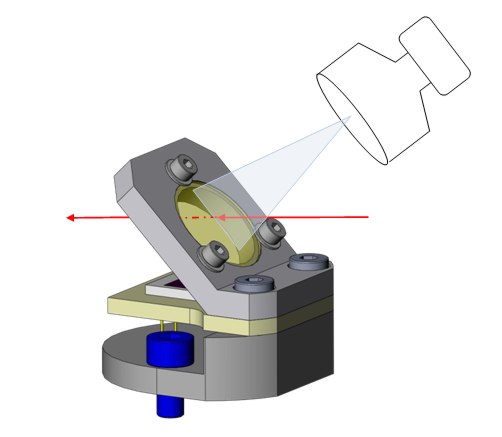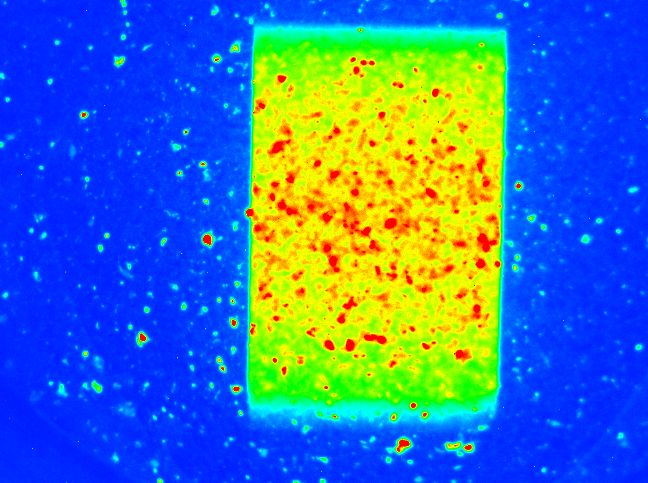Beam viewers
BM29 beam viewers
A standart beam viewer contains a fluorescent screen (only first one operating in white beam is a polycrystalin diamond), a camera looking on it and a diode counting photons. In order to check the beam shape, the fluo-screen has to be put IN the beam. Note that they are all non-transparent to X-rays, so they have to be OUT of beam once data collection started.
CAMERAS in Optics hutch can be viewed here and cameras in Experimental hutch here.
ACTUATORS of fluoscreens can be controlled via Spec OPT and EXP:
OPT> wbin or wbout (polycrystalline diamond creen located just after Primary slits), monoin/out (fluoscreen after multilayer monochromator), mirrout (fluoscreen after toroidal mirror) and endout" (fluoscreen after secondary slits number 2 just before the safety shutter) for Optics hutch;
Figure shows the image appearing when polycrystallin diamond screen is put in the beam, primary slits set to 4 mm by 4 mm.
Note i) granular features in the snapshot: diffraction of individual diamond grains, ii) beam spot is much larger vertically than horizontally even if the beam has the square cross section at this place (also image of borders of the beam is less sharp when limitig vertically): polycrystallin diamond screen has an angle ~45° with respect to the incident X-ray beam and camera looks perpendicularly to it.
EXP> yagin ot yagout (fluoscreen behing fast shutter), diodein/out (diode behind beam defining slits), yag1in/out (fluoscreen behind the first beam cleaning slits), yag2in/out (fluoscreen behind the second beam cleaning slits) and yagftin/out (fluoscreen in flight tube just after capillary) for Experimental hutch respectively.
DIODES are red by Keithley (Optics hutch) and wagos (Experimental hutch). Check their reading by 'ct' command. The names of diodes counters follow those of actuators (ex. k_wb, k_end for Keithleys, yag1d or yagftd for wagos).



